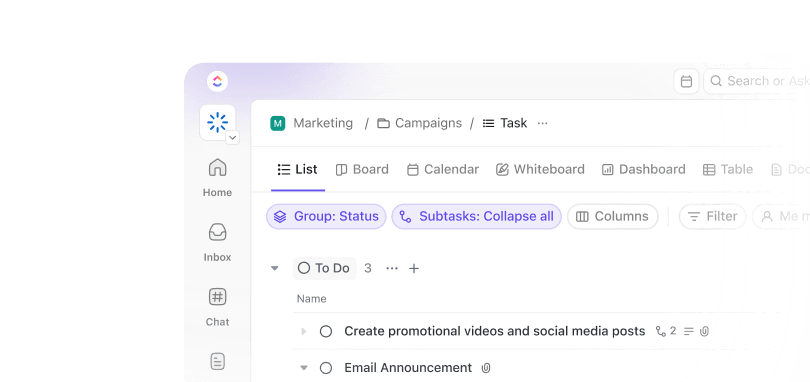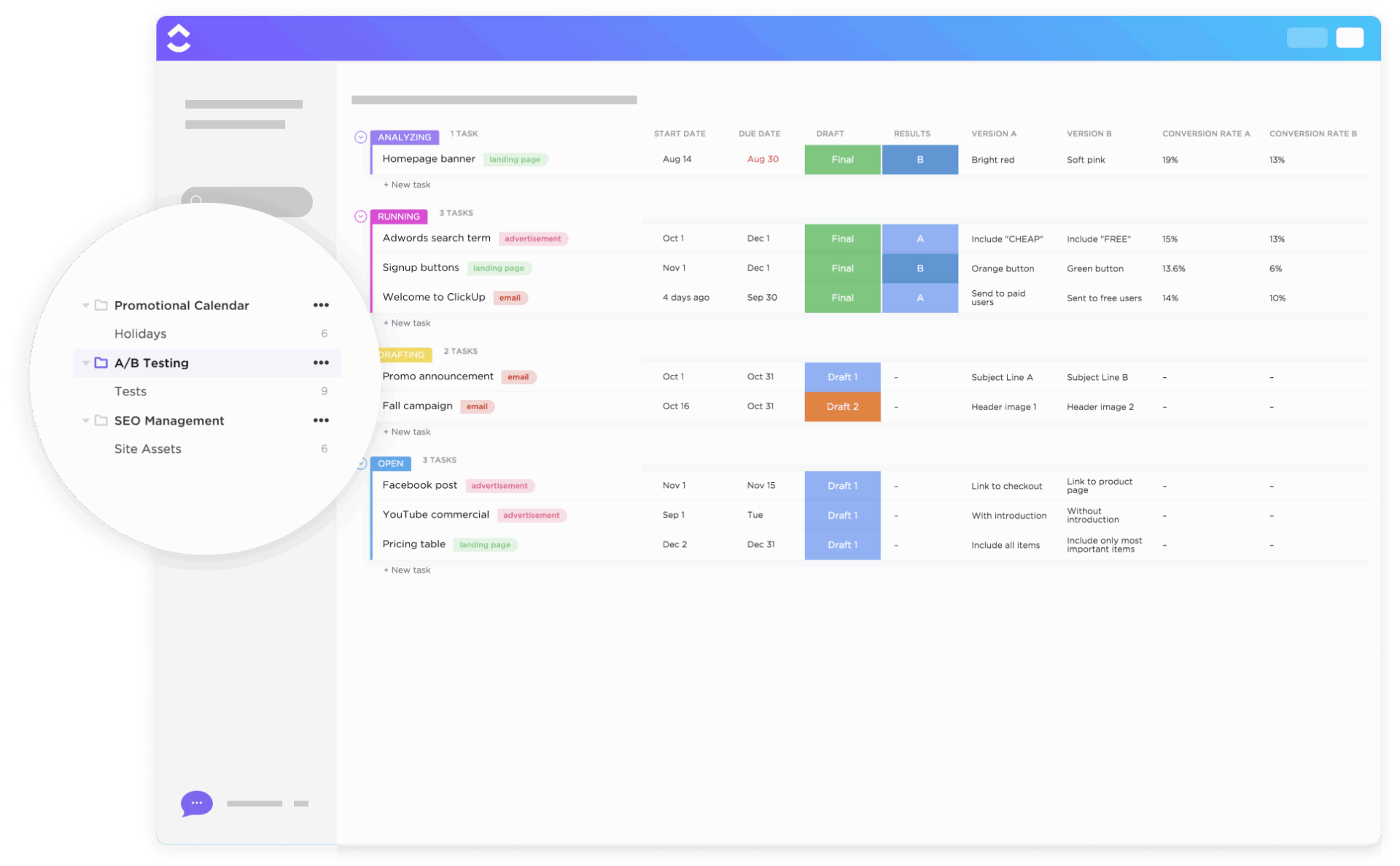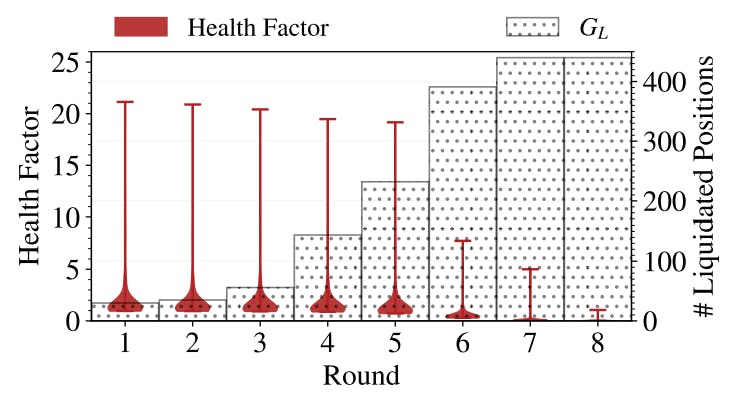Even with skilled SEO specialists, performance marketers, and top-tier developers, many companies still struggle to convert website visitors into paying customers. As a result, they fall short of their broader business goals.
If conversions are slipping, a conversion rate optimization audit can reveal where things go wrong.
A CRO audit helps you evaluate your website’s performance from the perspective of your target audience, uncovering friction points in the customer journey and optimizing the overall user experience.
Let’s take a deeper look at how a CRO audit works and its execution.
How to Conduct a Complete CRO Audit?
What Is a CRO Audit?
A CRO audit is a detailed evaluation of your website or digital product designed to identify conversion barriers and opportunities to improve the conversion rate.
📌 For example, if we were to run a conversion audit for a brand selling their products on Amazon, we’d analyze:
- Product titles: Are they clear, relevant, and keyword-optimized?
- Product descriptions: Do they communicate benefits and address user pain points?
- Images: Are they professional, high-resolution, and informative?
- Pricing: Is it competitive, transparent, and aligned with perceived value?
- Reviews: Are negative reviews being addressed, and are there enough positive ones to build social proof?
- User experience: Can users easily browse, read, and interact with the product pages?
- Call to action (CTA): Are CTAs visible, persuasive, and driving the intended user interactions?
- Mobile devices: Is the product page optimized for smaller screens and responsive design?
CRO tools enable you to understand your customers’ experience from their perspective.
⭐️ Featured Template
The A/B Testing Template is your go-to tool for running a thorough CRO audit. It helps you organize hypotheses, track experiment performance, and document results—all in one centralized workspace. With built-in Custom Fields and multiple views, you can streamline testing, prioritize ideas, and scale what works faster.
Why Conduct a CRO Audit?
Can you make a business successful based on your intuition? That’s what you sign up for when you skip the CRO audit process.
A structured conversion rate optimization audit helps uncover real issues, allowing you to fix what’s broken, optimize conversions, and focus your optimization efforts where they matter most.
Here’s why it’s a smart move for your business:
📍 Analyze the full user journey to locate drop-off points in the conversion funnel and identify where users fall away before becoming paying customers
🧪 Run A/B tests to evaluate page elements like ineffective CTAs, poor layouts, and weak headlines that may be hurting your conversion rate
🔎 Audit user experience across devices to detect friction in product pages, slow load times, or poor mobile optimization
🎯 Evaluate whether your landing page messaging aligns with the target audience and if your value proposition is strong enough to drive action
📋 Review forms and checkout flows to uncover usability issues, reduce user pain points, and build trust in the conversion process
💰 Increase customer satisfaction and reduce acquisition costs by converting more of your existing site visitors without raising ad spending
Steps to Conduct a CRO Audit
Here’s a step-by-step process to carry out an effective evaluation to optimize your conversion rates.
Step 1: Review user behavior
Start by analyzing user behavior. Understanding how visitors interact with your website is critical to identifying pain points.
In fact, McKinsey reports that organizations using behavioral data analytics see 85% more sales growth and over 25% higher gross margins than their competitors.
Since you can’t observe users in person, behavioral analytics tools become inevitable.
For instance, heatmap software provides you with a visual description of user interactions by highlighting them across key web pages. This means you’ll be able to see clicks, scrolls, and cursor movements clearly and easily detect engagement zones, drop-off points, and usability issues.
Session recordings complement this feature by offering video-like replays of real website and app sessions. You can track how users scroll, click, and engage with form fields or CTAs, and observe their behavior on mobile devices.
These website optimization tools give you a comprehensive understanding of what’s working, what’s confusing, and where users may be abandoning the funnel.
When you tie in all the info you capture with a project management tool like , your job becomes 10x easier.
With , you can track changes, centralize user feedback, and document insights in real time. You’ll understand how users interact with your site and be able to act on that information quickly and collaboratively.


Here’s a quick peek into how you can manage your project with ’s AI-powered everything app for work 👇🏻
Step 2: Evaluate page load speed and mobile usability
If your site takes more than a second to load, users will likely bounce, costing you traffic and potential customers.
In a CRO audit, assessing page speed and mobile usability is non-negotiable.
To avoid losing conversions to faster competitors, you need to evaluate your performance across devices and browsers.
You can use the following tools to get started:
- Google Analytics and Google PageSpeed Insights evaluate desktop and mobile versions of your site, offering performance scores and clear recommendations to improve user experience
- GTmetrix analyzes load time, flags performance bottlenecks, and tracks Core Web Vitals like LCP and TBT across landing pages and product pages
- WebPageTest tests your website on real devices from multiple locations, measuring key metrics like time to first byte and full load time to inform your CRO audit checklist
🧠 Fun Fact: For every second added to a page’s load time, the potential for a 7% reduction in conversions increases.
When conducting a mobile usability audit for conversion rate optimization, follow a structured approach:
- Define key conversion goals on mobile, such as sign-ups, purchases, or form submissions
- Prioritize critical website sections and conversion points in the audit
- Leverage user testing and analytics data to understand how users interact with mobile elements
- Identify pain points where users hesitate, drop off, or abandon the process
- Formulate and test hypotheses with A/B testing to validate optimization efforts
- Analyze the results to make quantitative data-driven improvements that support more conversions and greater customer satisfaction
Step 3: Analyze conversion funnels
Conversion funnel analysis is the key to unlocking valuable information as to where customers are getting stuck.
However, first, you have to define your goals—whether it’s a sign-up, purchase, or form submission. Then, map out the user journey across each step leading to that outcome to guide your optimization process effectively.
This visual breakdown helps you monitor how users interact with different website sections and isolate conversion points where friction occurs.
You can use Mind Maps here to easily draw workflows and plan client acquisition strategies. In fact, you can use the Re-Layout feature to reorganize the hierarchy of the map while still maintaining its readability.


Now, by tracking each stage, you can identify users abandoning a checkout page or stalling on a sign-up form—and then dig into the user behavior behind those exits.
The goal here is to pinpoint specific pain points and resolve them with actionable changes.
Such changes could mean simplifying a form, improving CTA clarity, speeding up load times, or optimizing the user flow between product pages and the landing page.
📌 For example, if users consistently stall on your pricing page, trigger a contextual tooltip explaining your plans or offering a quick chat link.
📮 Insight: Just 12% of users in our survey currently rely on AI built into productivity platforms—hinting that most tools haven’t yet delivered the intuitive, in-context experience users expect.
So here’s the question: Can your AI actually run an automation based on plain-text instructions? Brain can.
It’s built directly into your workflows—summarizing comment threads, improving content, retrieving workspace data, generating visuals, and more. No toggling between tools. No guesswork.
That’s why 40% of users have replaced 3+ apps with our all-in-one solution for work.
Step 4: Check copy, CTAs, and forms
How exactly do you check if your copy and CTAs are persuasive enough?
Start by reviewing whether your content aligns with your target audience’s expectations.
- Does the messaging resonate with their needs and intent?
- Does the tone remain consistent and easy to read?
Pay special attention to the value proposition—users should immediately understand what’s in it for them. Further, check your page for broken links, outdated offers, or slow-loading images.
Once your content is in shape, it’s time to test it. A/B testing, combined with data analysis, helps you identify which version of your copy, CTA placement, or form design leads to more conversions.
However, organizing multiple experiments can get overwhelming.
To make this process easier, use the A/B Testing Template.
It offers readymade structures for planning and documenting your testing workflow and saves valuable time so that you can:
- Get a high-level overview of your testing initiatives and track progress
- Organize your experiments using List, Board, Calendar, or Timeline views
- Use Custom Fields to log performance data like conversion rates, test outcomes, and audience segmentation
💡 Pro Tip: Are you struggling to personalize your marketing initiatives for every stage of the buyer journey?
Map your buyer journey stages in a tool like or HubSpot, then use dynamic content blocks in your emails or landing pages (via platforms like ActiveCampaign or Mutiny) to tailor messaging by stage.
For example, showcase studies to mid-funnel leads and ROI calculators to bottom-funnel ones—automatically.
Using for CRO Audit Management
Once you’ve gathered all the key performance indicators—friction points from heatmaps, high-converting product descriptions and CTAs, and detailed performance data—it’s time to organize it all in one place. This is when becomes your CRO command center.
Let’s take a closer look at the features that make it ideal for CRO audit management.
1. Track audit tasks with templates and Custom Fields
By now, you can probably tell that a CRO audit involves several components.
Without a clear system, it’s easy to lose track of findings, overlook conversion points, or duplicate efforts across your team.
That’s where Templates come in to help you capture everything with precision and act faster on insights that improve your conversion rate.


- Create (and reuse) templates for repeated tasks like landing page reviews, form analysis, or A/B test tracking. Or choose from ’s 1000+ pre-built ones
- Personalize each template with Custom Fields to capture key user behavior data, like conversions, test versions, or friction scores
- Display and manage these fields in List, Table, Board, or Calendar views, depending on how your team works
- Use permissions to control access, especially for guest reviewers or external collaborators
By combining structured templates with field-level detail, keeps your CRO audit checklist clean, actionable, and easy to scale—no matter how many tests, web pages, or conversion rate metrics you’re tracking.
2. Collaborate with teams using real-time comments and Docs
A CRO audit involves cross-functional input—from marketers and UX designers to developers and analysts.
Without smooth collaboration, tasks get delayed, insights are lost, and implementation slows down. To avoid this, your audit workflow needs real-time communication and centralized documentation.


makes the process easy with real-time comments and Docs:
💬 Add comments directly on Tasks or inside Docs, tag teammates, and assign action items so nothing gets missed
🏷️ Use Assigned Comments to turn feedback into trackable to-dos, ensuring accountability and faster execution
✍🏼 Collaborate live in Docs to write, revise, and share findings from your conversion rate optimization audit, including user feedback, hypotheses, and A/B test summaries
🔗 Link Docs to tasks, embed data, and resolve comments as updates are made—keeping the audit process agile and traceable
💡 Pro Tip: When it comes to A/B content testing, ’s A/B Content Management & Testing Template helps you organize, test, and track A/B content variations in one place—making it easier to monitor campaign stages, conversion rates, and performance at a glance.
3. Visualize CRO progress using Dashboards and Milestones
You’ve gathered insights, identified pain points, and shared findings with your team. Now it’s time to track everything—because without visibility, your optimization efforts lose momentum.
solves this issue with fully customizable dashboards. With Dashboards, you can:
- Monitor key conversion rate metrics and user engagement trends using charts, graphs, and data cards
- Centralize performance data from A/B tests, form completions, and conversion funnels to track what’s improving—and what’s not
- Build reports for different stakeholders, showing progress across landing pages, product pages, and technical fixes


This is what Shikha Chaturvedi, Business Analyst, Cedcoss Technologies Private Limited, has to say about Dashboards.
Meanwhile, Milestones keep your audit structured and goal-driven.
Convert key deliverables—like launching a new form or completing usability testing—into visual checkpoints (and don’t forget to celebrate when you hit them!🤩). Milestones appear across Gantt, Board, and Timeline views, giving your team a clear line of sight to critical conversions.
Tips to Boost Conversion Rates
On a very interesting Reddit thread, a user asked:
If you’re facing a similar challenge, here are some practical strategies to strengthen your conversion rate optimization efforts:
- Simplify your site navigation so users don’t get lost in your funnel—use clear headings, logical page structure, breadcrumbs, and a visible search bar to support a smoother customer journey and reduce drop-off points
- Use bold, high-contrast CTAs that stand out visually and prompt action. Button placement and clarity often make the difference between a site visitor and a paying customer
- Create content that informs or solves real user problems—whether it’s an explainer video, FAQ section, or blog post optimized for user intent, relevant content improves user engagement and builds trust
- Prioritize mobile optimization. Many users drop off due to clunky mobile layouts or slow load times, so ensure your landing pages, forms, and product pages are fast, responsive, and easy to interact with
- Add social proof. Highlighting real customer reviews, testimonials, or user-generated content near high-intent conversion points helps build credibility and reduce hesitation among potential customers
- Simplify your checkout or sign-up flow. Reduce friction by removing unnecessary form fields, offering guest checkout, and enabling autofill so you don’t lose users in the final stage of the conversion process
CRO-nically Underperforming? Not with
Guessing why users bounce from your page and move to the next search result is not an efficient approach.
A successful CRO audit takes the blindfold off and hands you a highlighter to mark exactly where users drop off, what makes them stay, and how to gently guide them toward that juicy conversion.
From tracking user behavior and fixing sluggish mobile usability to optimizing CTAs, forms, and funnel flows— helps you handle it all like a pro.
QubicaAMF has already saved 40% of the time that they used to spend wrangling spreadsheets by switching to Dashboards.
So if you’re still managing five tools just to analyze a CTA…stop. Sign up for instead!


Everything you need to stay organized and get work done.














